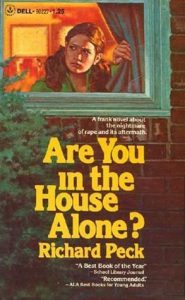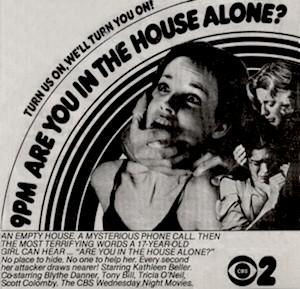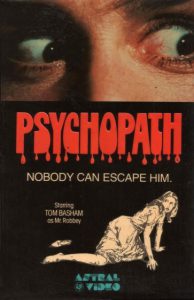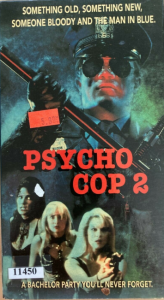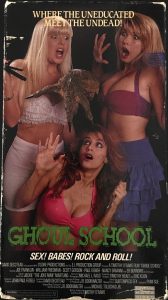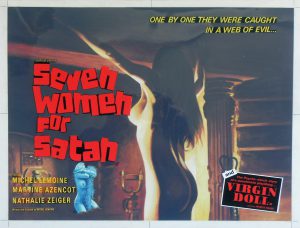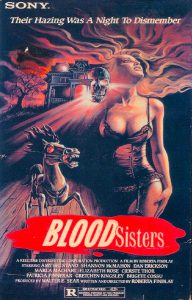When I’m not watching movies, I can sometimes be found reading a book. Much like I love genre films and Not Quite Classic Cinema, I also have an appreciation for sleazy pulp novels and hard boiled crime fiction. As a teenager, I read all of Mickey Spillane’s classic books and had since moved on to more obscure novels that looked cool. One day I picked up six old beat up paperbacks for a dollar in a used bookstore bargain bin – and one of those books was The Sin Sniper by Hugh Garner. It looked like a sleazy crime story about a serial killer murdering prostitutes, which I hoped might make it a typical example of entertaining Not Quite Classic Literature. But there was one thing that set this book apart from all the other pulp novels I had read: it was openly Canadian. I’m pretty sure that before that moment I had never encountered a book like The Sin Sniper that took place in Canada. Of course I had to buy it and check it out.
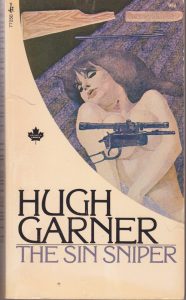 Set on the mean streets of Toronto, The Sin Sniper was a good book – almost too good. It wasn’t the “so bad it’s good” kind of book that I might have expected. It made me curious to know more about the author, Hugh Garner, and when I came across other books by him at places like The Children’s Hospital Book Market, I picked them up and added them to my library. Most of them looked more like respectable literature than pulp crime novels. Cabbagetown seemed to be his most famous book, but he also won the Governor General’s award for Hugh Garner’s Best Stories. I did find a couple of other books that looked related to The Sin Sniper: A Nice Place to Visit (1970) and Violation of the Virgins (1971) – both of which had salacious looking covers. The more books of his I read, the more impressed I was with Hugh Garner, and I wondered why I had never heard of him. Despite winning Canada’s highest award for writing, Garner did not seem to be remembered alongside other great Canadian authors like Robertson Davies, Margaret Laurence, Mordecai Richler and Margaret Atwood. Maybe because he died of alcoholism at age 66, or maybe because he wrote pulpy looking mysteries toward the end – who knows? But I will always take an interest in any book with the name Hugh Garner on the cover.
Set on the mean streets of Toronto, The Sin Sniper was a good book – almost too good. It wasn’t the “so bad it’s good” kind of book that I might have expected. It made me curious to know more about the author, Hugh Garner, and when I came across other books by him at places like The Children’s Hospital Book Market, I picked them up and added them to my library. Most of them looked more like respectable literature than pulp crime novels. Cabbagetown seemed to be his most famous book, but he also won the Governor General’s award for Hugh Garner’s Best Stories. I did find a couple of other books that looked related to The Sin Sniper: A Nice Place to Visit (1970) and Violation of the Virgins (1971) – both of which had salacious looking covers. The more books of his I read, the more impressed I was with Hugh Garner, and I wondered why I had never heard of him. Despite winning Canada’s highest award for writing, Garner did not seem to be remembered alongside other great Canadian authors like Robertson Davies, Margaret Laurence, Mordecai Richler and Margaret Atwood. Maybe because he died of alcoholism at age 66, or maybe because he wrote pulpy looking mysteries toward the end – who knows? But I will always take an interest in any book with the name Hugh Garner on the cover.
I was surprised to learn, years later, that The Sin Sniper had been made into a movie – a Canuxploitation movie, no less – called Stone Cold Dead (1979). The movie was made at the height of the Tax Shelter Days, which I have talked about a few times before – most recently during my discussion of Sudden Fury (1975). Much like Sudden Fury, I had never heard of Stone Cold Dead. I had not seen it on late night TV back in the day, nor had I rented it with my friends during those glorious early days of Mom and Pop Video Stores. I first read about the movie in Gerald Pratley’s A Century of Canadian Cinema. Pratley, who can be very hard on movies – especially genre films, gave Stone Cold Dead a decent review. I knew that I had to track it down and watch it.
Until very recently, the only way to watch Stone Cold Dead was on an old VHS tape, and luckily I was able to locate one. I actually recognized the box art from the video store shelves of my past. I remembered seeing it, but somehow I had never picked it up and taken a closer look at it. If I had, I surely would have rented it long before now. In any case, I finally watched the movie and I liked it. I was surprised and pleased to see both Linnea Quigley and Michael Ironside making (admittedly brief) early appearances in it. I was also surprised, and less pleased, to see that the filmmakers seemed to be trying to imply that the story was taking place in New York City. The book had been clearly set in Toronto, and the movie was clearly mostly shot in Toronto. Pratley, in his review, had called it a “Steamy melodrama about a Toronto detective…”. I have read several other reviews that claim it’s set in Toronto – and even Wikipedia, at this very moment, says “A Toronto detective (Richard Crenna) searches for a serial killer who shoots prostitutes…”. So why does Julius Kurtz’s (Paul Williams) limo have New York license plates? And why is there an American flag prominently displayed behind the desk of Sgt. Boyd (Richard Crenna)’s boss?

Hudson’s Bay coat like the one seen in Stone Cold Dead (1979)
I knew something was up when an early shot of the city’s skyline included the Twin Towers, and there was also a montage of images from Times Square. These shots were, however, mixed with recognizable shots of Toronto’s famous Yonge Street. I thought perhaps the filmmakers were simply trying to fictionalize the city a little bit, or maybe make the unreasonably clean looking Toronto just a little bit grungier. This strange mashup of Canada and USA really came to a head for me during a scene in which a handful of American money is held up just a few feet away from a person wearing a Hudson’s Bay coat (an incredibly iconic Canadian thing). I can’t help but think that someone was laughing up his sleeve when this scene was shot.
I recently upgraded my old VHS copy of Stone Cold Dead to the new Kino Lorber Blu-ray, and I was shocked to discover that it’s a different cut of the movie. The one on the VHS tape is the 99 minute American cut, and the one that Kino Lorber has lovingly restored for the Blu-ray is the 108 minute original Canadian (and presumably director’s) cut. There are apparently many subtle differences between the two, which are itemized on movie-censorship.com. The biggest difference, at least to me, is Linnea Quigley. To put it bluntly, she is in the shorter American cut of the film, but she’s not in the longer Canadian cut.
What the -?
Usually when a movie is restored to its longer, more complete form it has MORE scenes in it – not less. How can Quigley’s scene not be there? Mild SPOiILER ALERT for those who haven’t watched this movie yet: Linnea Quigley plays the first murder victim. We see her get shot in the shower at the beginning of the shorter VHS version of the movie. I had seen this version of the movie a couple of times over the years, so I had strong memories of it. The longer, original cut of the film starts after the first murder has already happened. The police make reference to it, but we never see it. The first murder we see, is actually the second murder (and incidentally the victim is played by future star of Canadian stage and screen Jennifer Dale).
This brings up a question: Was this scene with Linnea Quigley shot for the original movie and cut for some reason (like running time), or was it shot and added later by the American distributor? I can’t find any reliable answer to this question. The Blu-ray includes an interview with the director, George Mendeluk, who went on to direct many TV movies and episodes of TV shows including Miami Vice (1984-1989) and Canadian favourite Night Heat (1985-1989). I had hoped that Mendeluk might talk about the different cuts of Stone Cold Dead, but alas he did not. Neither do film historians Howard S. Berger and Nathaniel Thompson, who do the commentary track.
The fact that there is an offscreen first murder in the original cut make me suspicious that the scene may have been shot and left out for some reason. It just feels a bit odd that we don’t start the film with that first murder. It might be different if they were saying that these murders have been going on for years, but the killing just started. If they treated the second murder (of Jennifer Dale) as if it was the first murder, then I might be more suspicious that the Linnea Quigley scene was tacked on later. As it is, I’m just not sure what to think. But either way, it’s unfortunate that the Blu-ray doesn’t at least include the Linnea Quigley scene as an outtake.
Incidentally, Linnea Quigley has shared the trailer for Stone Cold Dead on her YouTube channel, and you can see clips from her scene in it. The trailer included on the Blu-ray is different (presumably from the original Canadian release) and does not include Quigley’s scene. However, the poster art for the movie, which is included with the Blu-ray (and used as the menu of the Blu-ray) is an image of a woman who’s just been shot in a shower (if that’s not actually Linnea in the picture, it’s meant to evoke her). Of course, this poster might have been created to promote the American cut of the film, and not the original Canadian cut…
And so the mystery only deepens.
One thing I can be sure of, is that I need to hang onto my VHS copy as well as the new Blu-ray – which is stunning, by the way. The movie has never looked better, and I for one am always glad to have more of a good thing, so the extra eight minutes of footage is gold as far as I am concerned.
I’ve already gone on for far too long, but I have to say a few words about the performances in Stone Cold Dead. They are all excellent. Paul Williams is particularly brilliant as Julius Kurtz, a pimp and prime suspect in the murders. He is essentially playing a bad guy in this movie, but he manages to be three dimensional and even sympathetic at times. He can be scary and evil in some scenes, but then display a depth of human emotion and sadness that you do not normally see in a character like this. I grew up watching Paul Williams guest star on some my favourite TV shows, like The Hardy Boys/Nancy Drew Mysteries (1977-1979), The Love Boat (1977-1987) and Fantasy Island (1977-1984). I also saw him in movies like Smokey and the Bandit (1977), Smokey and the Bandit II (1980), and of course The Muppet Movie (1979). I also loved the songs that Williams wrote for that movie and I even bought the sheet music so I could try to learn how to play them on the piano.
I should also mention that I am from Winnipeg, Manitoba, Canada – and as such, Paul Williams is practically royalty to me. He was the star, and wrote the music for, Phantom of the Paradise (1974), which flopped all over the world but was a smash hit in Winnipeg and played here for years. I remember reading the movie listings in the Winnipeg Free Press and seeing Phantom of the Paradise and The Rocky Horror Picture Show (1975) playing every weekend at midnight. I was too young to go, but I really wanted to. I was able to see Phantom of the Paradise when it debuted on TV – and it was still playing the theatres in Winnipeg. Needless to say, I loved it and it only furthered my appreciation of Paul Williams as an actor, musician and songwriter. Anyone who wants to know more about the story of Winnipeg and Phantom of the Paradise, should check out the documentary Phantom of Winnipeg (2019).
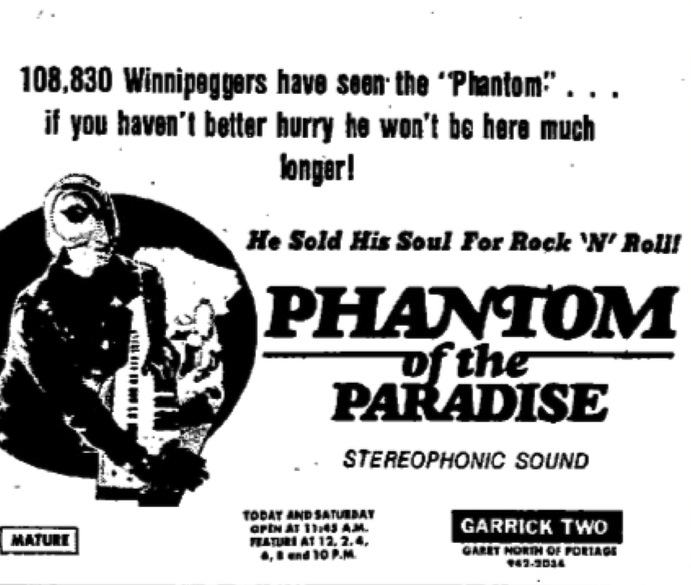
It’s hard to believe that a fairly obscure Canadian film like Stone Cold Dead could add even more fuel to my Paul Williams appreciation fire, but it does. I loved his performance in this movie, and I think it’s safe to say that it’s essential viewing for any Paul Williams fan.
Stone Cold Dead (1979) is an unfairly forgotten Canuxploitation classic. It could be compared to Dirty Harry (1971), Vice Squad (1982), and even Dario Argento’s giallos. It’s not quite like any of those things, as it tends to be more strangely nuanced and (dare I say) realistic – at least in terms of having three dimensional, human characters. This is rare for a piece of certified #NotQuiteClassicCinema, and some might call me mad for even suggesting it but I’m okay with that. I now feel like I need to re-read The Sin Sniper to see how it compares. And then I will definitely be re-visiting the movie on some future #FridayNightAtTheHomeDriveIn.


